SABnzbd is a program available for Windows, OSX, and Linux that is used for downloading newsbins. Newsbins are similar to torrents but are far superior.
Setting up SABnzbd is really simple. First download the copy that you would like to use and install it as you would any normal program. We use the Docker version on our Linux server and you can read about how to install that here.
Once SABnzbd is running it will stay open in the background and can be opened using your favorite internet browser and navigating to http://localhost:8080.
The first time SAB is started you will be met with a very simple setup wizard. Choose your language and click Start-Wizard
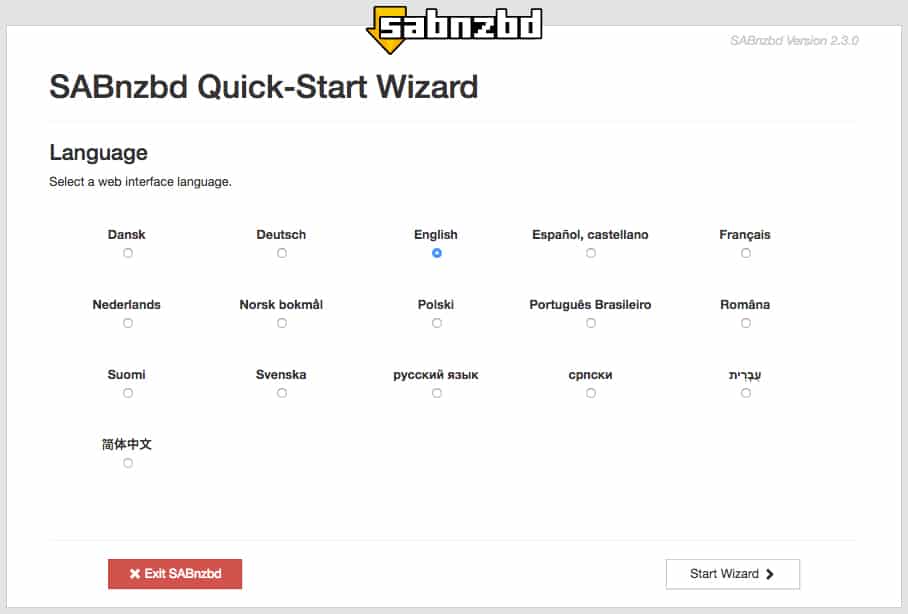
Next put in the details from your Usenet provider. There are several out there and you should choose the one that is right for you.
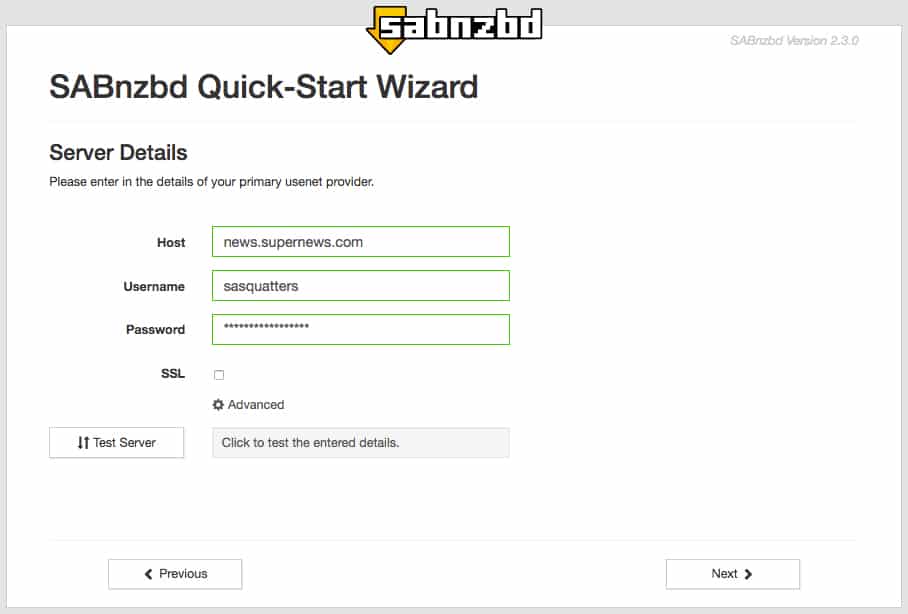
That’s it!
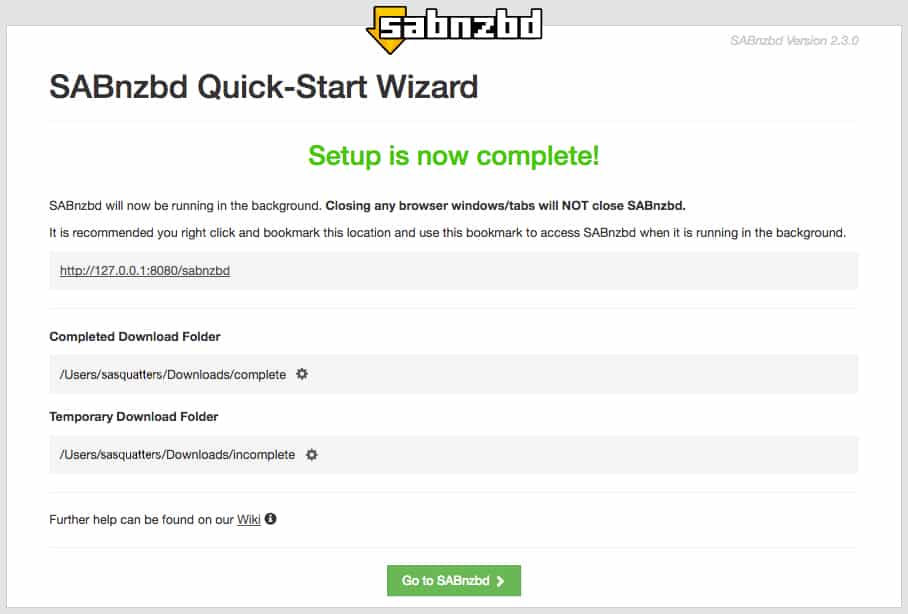
Now that the SABnzbd setup is complete, we need to change the download path as well as get the API key so that it can talk to Sonarr and Radarr. To do this, click the cog icon in the upper right corner to open up the settings.

Once the settings are open scroll down until you see the API Key. Copy this key and Input it into Sonarr/Radarr’s settings under Download Client. You can read more about setting up Sonarr here, and Radarr here.
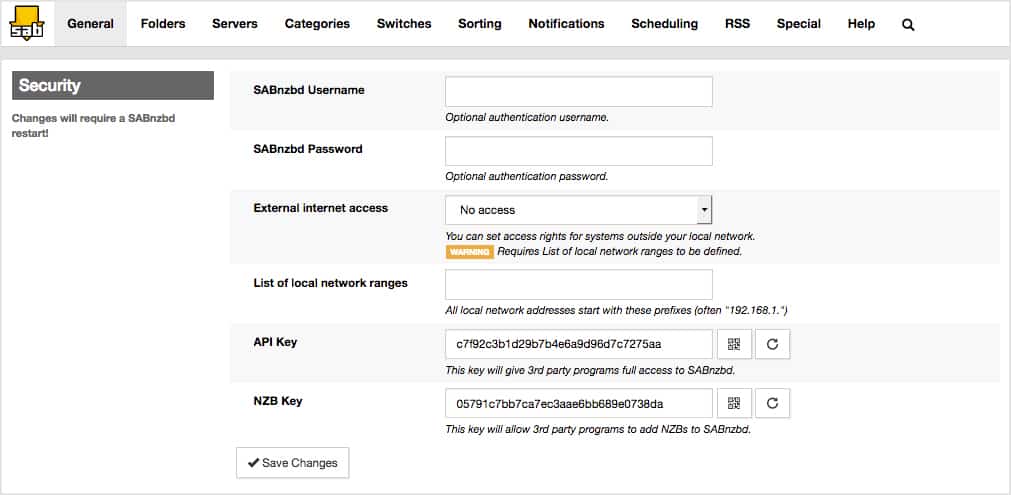
Next navigate to the Categories tab and set your various categories. This will ensure all of your downloads will be nicely organized into Sabnzbd’s /complete folder. This step is optional, but if categories are set they also need setup within the download section of Sonarr and Radarr. The folders need to be made manually, as Sabnzbd will not make them. In this section download priority can also be set allowing downloads to take priority over other downloads that may be less important.
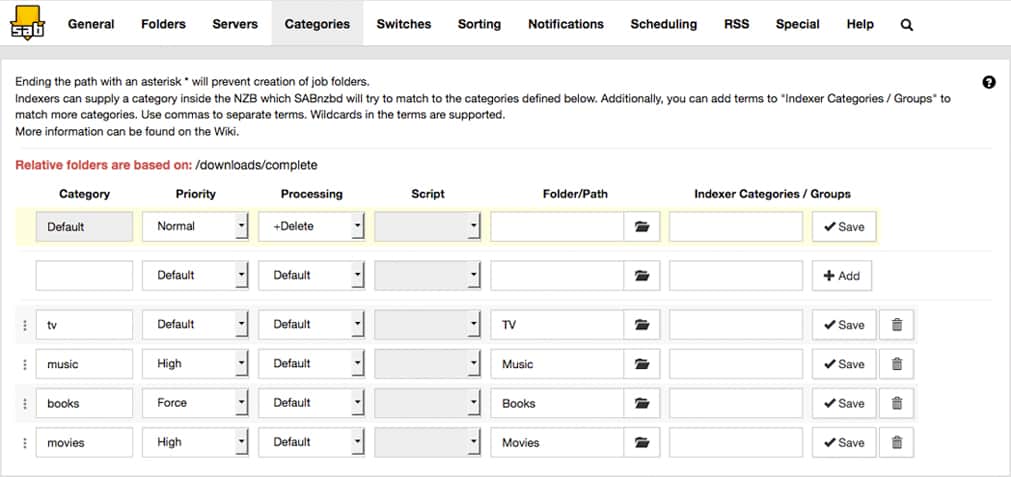
Since we are using a SABnzbd Docker container our folder structure a slightly different from those running SABnzbd on their PC.

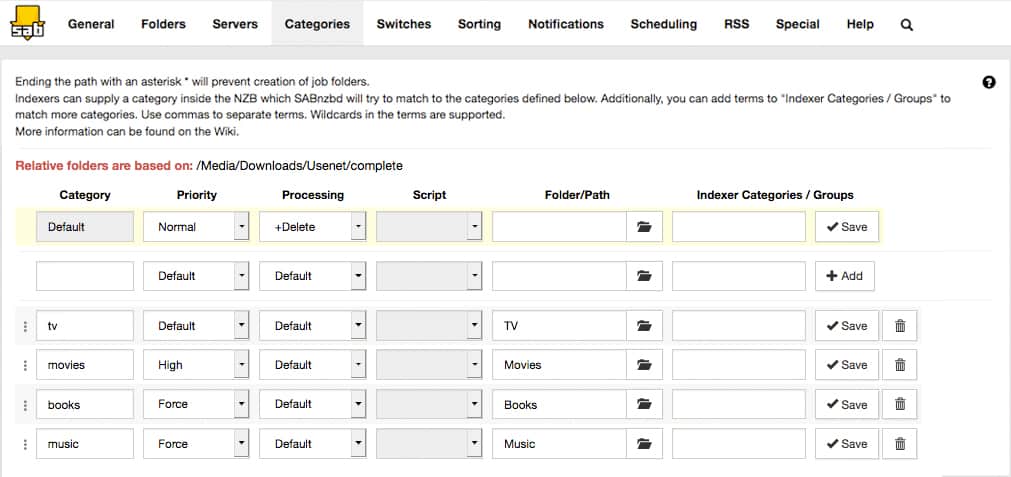
Now that this is setup Sonarr and Radarr will begin sending jobs to the client via API calls.
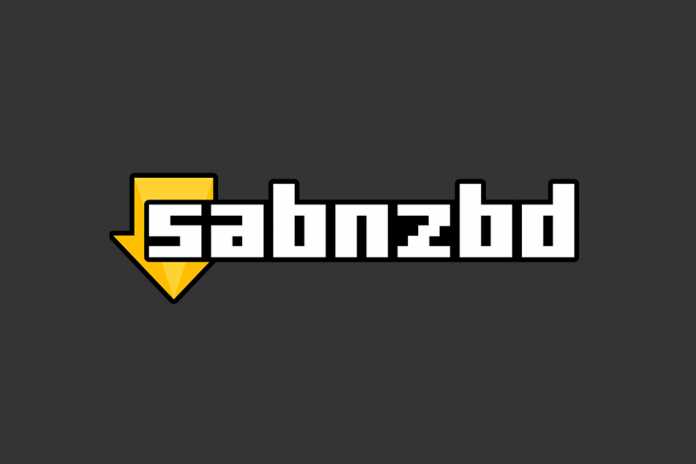
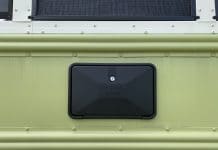






Great guides and thanks for that, but do you not recommend setting up UserNames & Password for SABnbd?
I see no reason to do so if you’re the only user.
I guess I was asking as I was more concerned around external attacks rather than an insider threat. At least that’s what SABnzb GUI seems to suggest.
Eitherway you sir are a scholar & a gent for making theses guides. I’ve been tearing my hair out for a week trying to get OpenMediaVault configured as a docker download box and then dump the files to my windows remote share library. Then I came across your guides & tried it with my Synology NAS and it’s so much easier. Got it all up & running in a fews of hours, so thank you!
That’s why it is important to make a new user account to run the containers. If there were to be a breach, the attacker wouldn’t have access to the entire system. If you appreciate the tutorials, and would like to see more in the future, please consider donating using the button in the top right corner.
Yep, understood & implemented re the seperate user account, thought that a really nice touch but have also implemented password security. Donation incoming :).
Truly appreciate it!
Yep, understood & implemented re the seperate user account, thought that a really nice touch but have also implemented password security. Donation incoming :).